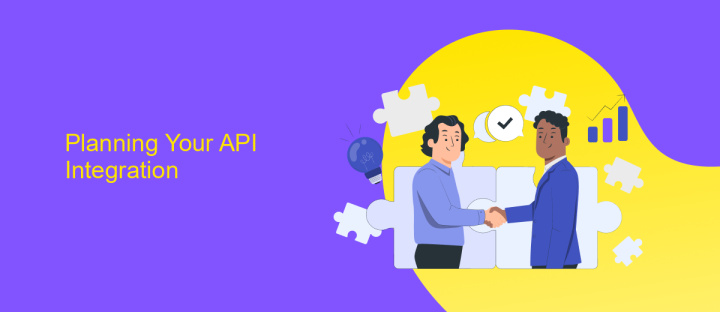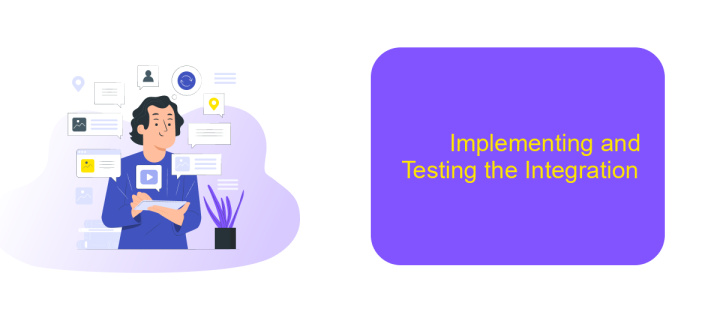How to API Integration
In today's digital landscape, API integration has become a crucial component for businesses aiming to streamline operations and enhance user experiences. By connecting different software systems, APIs enable seamless data exchange and functionality extension. This article will guide you through the essential steps of API integration, offering insights into best practices and common challenges, ensuring your integration process is both efficient and effective.
Understanding API Integration Basics
API integration is a fundamental concept in modern software development, enabling disparate systems to communicate and share data seamlessly. At its core, an API (Application Programming Interface) serves as a bridge between two applications, facilitating the exchange of information and functionality. Understanding the basics of API integration is crucial for developers looking to enhance system interoperability and streamline processes.
- APIs define a set of rules and protocols for interaction between software components.
- They allow different applications to access specific features or data from another service.
- APIs can be public, private, or partner-based, each with distinct access and usage policies.
- REST and SOAP are common API protocols, each with unique characteristics and use cases.
- Authentication and authorization are critical for securing API interactions.
By leveraging API integration, businesses can automate workflows, improve data accuracy, and enhance user experiences. Developers must familiarize themselves with API documentation and best practices to ensure successful implementations. As technology evolves, mastering API integration will remain a valuable skill, driving innovation and efficiency across various industries.
Planning Your API Integration

Before diving into API integration, it's crucial to outline a clear plan. Start by identifying the specific objectives you aim to achieve through the integration. Whether it's enhancing data flow, automating processes, or improving user experience, having a well-defined goal will guide your integration strategy. Next, assess the capabilities of the API you intend to use. Understand its endpoints, data formats, and authentication requirements. This understanding will help you determine compatibility with your existing systems and anticipate any potential challenges.
Once you have a solid grasp of your needs and the API's features, consider leveraging tools like ApiX-Drive to streamline the integration process. ApiX-Drive offers a user-friendly platform that simplifies connecting various applications without extensive coding. It allows you to automate workflows and sync data effortlessly, saving time and reducing errors. By planning meticulously and utilizing efficient services, you can ensure a smooth and successful API integration that meets your business objectives and enhances operational efficiency.
Choosing the Right API Integration Method

When integrating APIs, selecting the right method is crucial for seamless communication between systems. The choice largely depends on your specific needs, the type of data being exchanged, and the level of control required. Understanding these factors will guide you in making an informed decision that aligns with your project's objectives.
- RESTful APIs: Ideal for stateless operations and when scalability is a priority. They use standard HTTP methods, making them easy to implement and widely supported.
- SOAP APIs: Suitable for applications requiring strict security and complex transactions. They provide a higher level of security through built-in protocols.
- GraphQL: Best for applications needing efficient data retrieval. It allows clients to request specific data, reducing the amount of data transferred.
- Webhooks: Useful for real-time data updates. They push data to your application as it occurs, eliminating the need for frequent polling.
Your choice should consider the long-term maintenance and scalability of your application. Evaluate the technical requirements and constraints of each method to ensure it supports your integration goals effectively. Balancing these factors will help you implement an API strategy that enhances functionality and user experience.
Implementing and Testing the Integration

Implementing API integration requires a structured approach to ensure seamless communication between systems. Begin by thoroughly understanding the API documentation, which provides essential details on endpoints, request methods, and data formats. This knowledge is crucial for crafting accurate requests and handling responses effectively.
Once you grasp the documentation, proceed to set up your development environment. This involves configuring your application to send requests to the API. Utilize API client tools like Postman or curl for initial testing, as they allow you to simulate requests and observe responses without writing code.
- Review the API documentation thoroughly.
- Set up your development environment.
- Use API client tools for initial testing.
- Develop integration logic in your application.
- Conduct comprehensive testing to ensure reliability.
After the integration logic is developed, comprehensive testing is vital. Test various scenarios, including edge cases, to ensure the integration handles all potential situations. Automated tests can be beneficial for repeated testing cycles. Finally, monitor the integration in a production environment to catch any issues that may arise post-deployment.
- Automate the work of an online store or landing
- Empower through integration
- Don't spend money on programmers and integrators
- Save time by automating routine tasks
Monitoring and Maintaining Your API Integration
Effective monitoring and maintenance of your API integration are crucial for ensuring seamless operations and minimizing disruptions. Begin by setting up automated alerts to notify you of any issues or anomalies in real-time. Tools like ApiX-Drive can simplify this process by providing comprehensive monitoring features that track API performance and uptime. Regularly review these alerts to identify patterns or recurring issues that may require deeper investigation.
In addition to monitoring, maintaining your API integration involves regular updates and optimizations. Ensure that your integration is running on the latest API version to benefit from new features and security enhancements. Schedule periodic reviews to assess the efficiency of your integration, making adjustments as necessary to accommodate changes in your business processes. By leveraging services like ApiX-Drive, you can streamline these tasks, allowing for automated updates and easy modifications to your workflows. This proactive approach will help maintain the reliability and effectiveness of your API integration over time.
FAQ
What is API integration and why is it important?
How can I get started with API integration?
What are the common challenges in API integration?
How do I ensure data security during API integration?
Can I integrate APIs without coding skills?
Do you want to achieve your goals in business, career and life faster and better? Do it with ApiX-Drive – a tool that will remove a significant part of the routine from workflows and free up additional time to achieve your goals. Test the capabilities of Apix-Drive for free – see for yourself the effectiveness of the tool.


